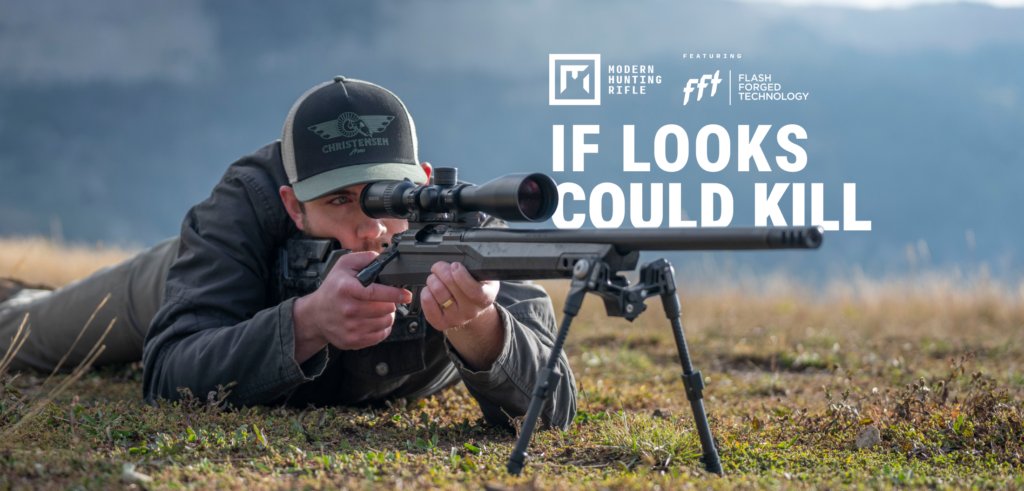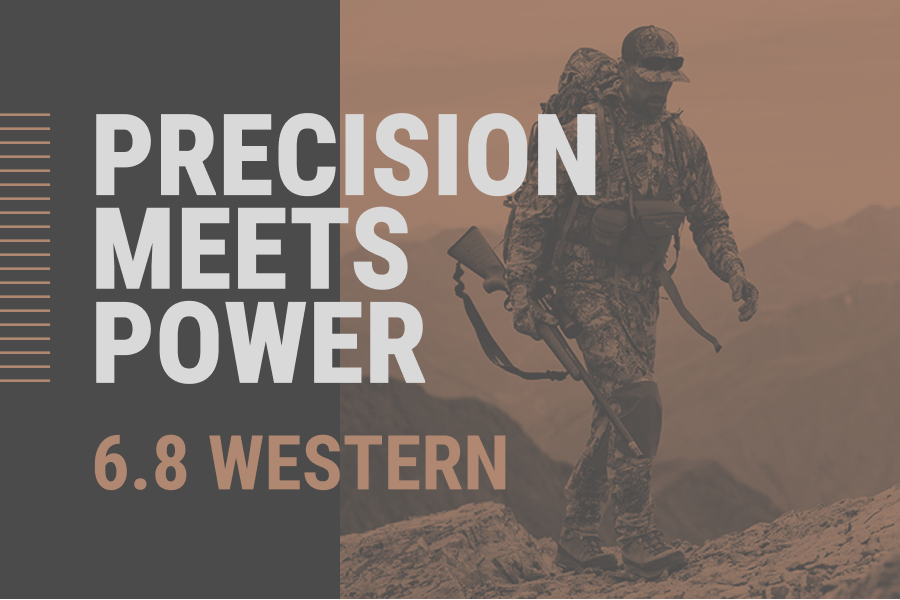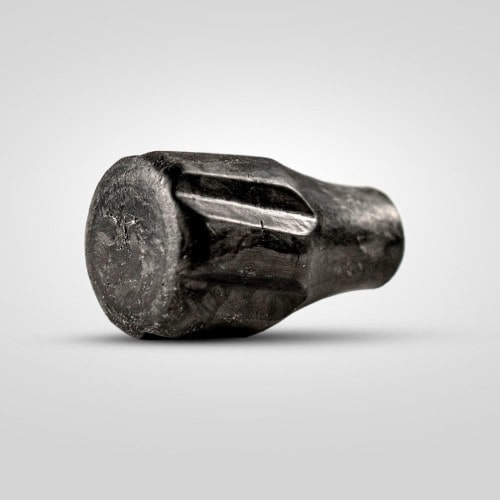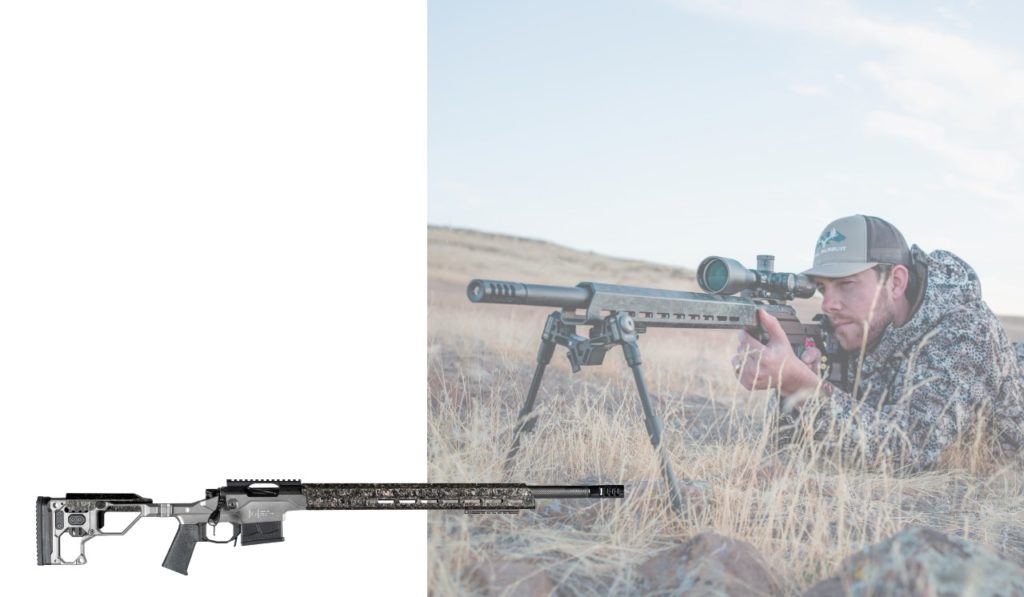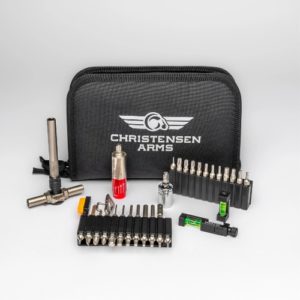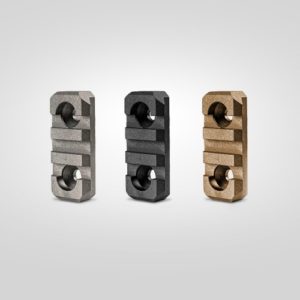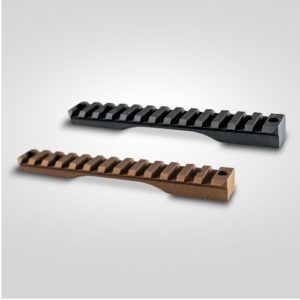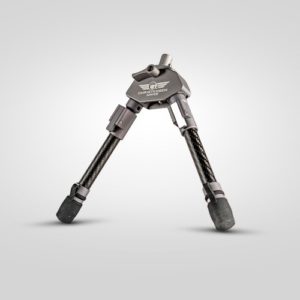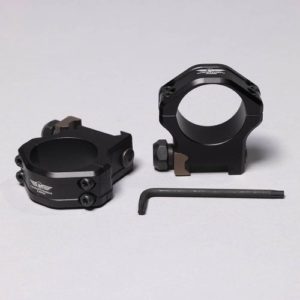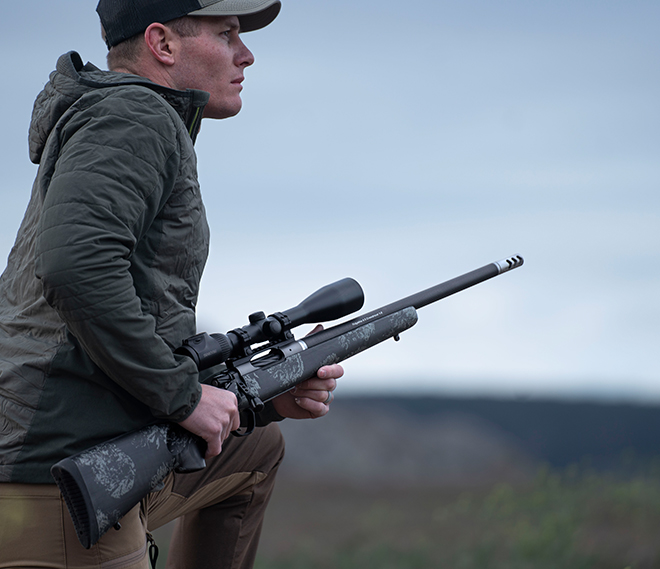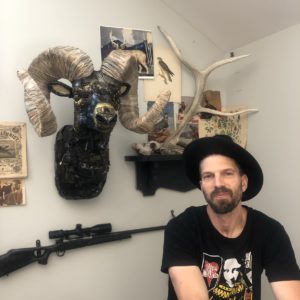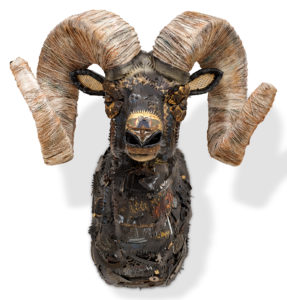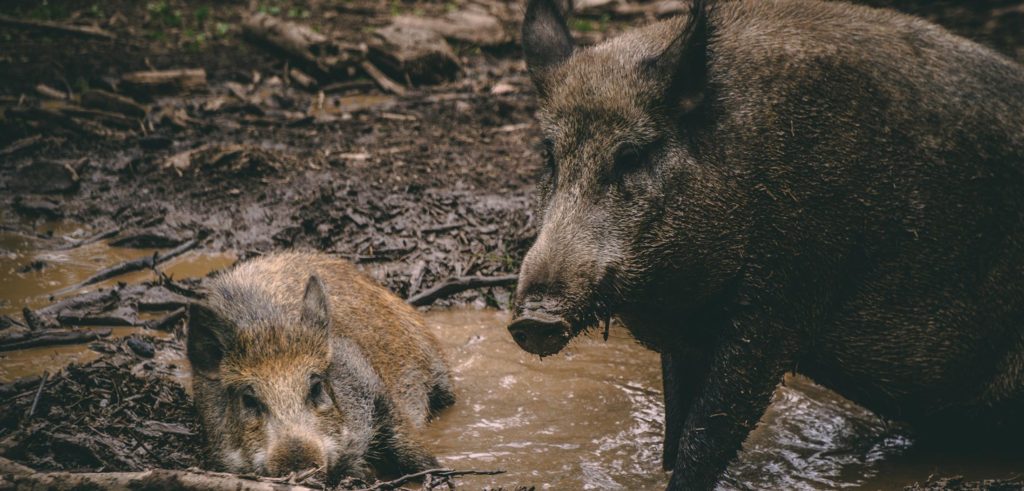
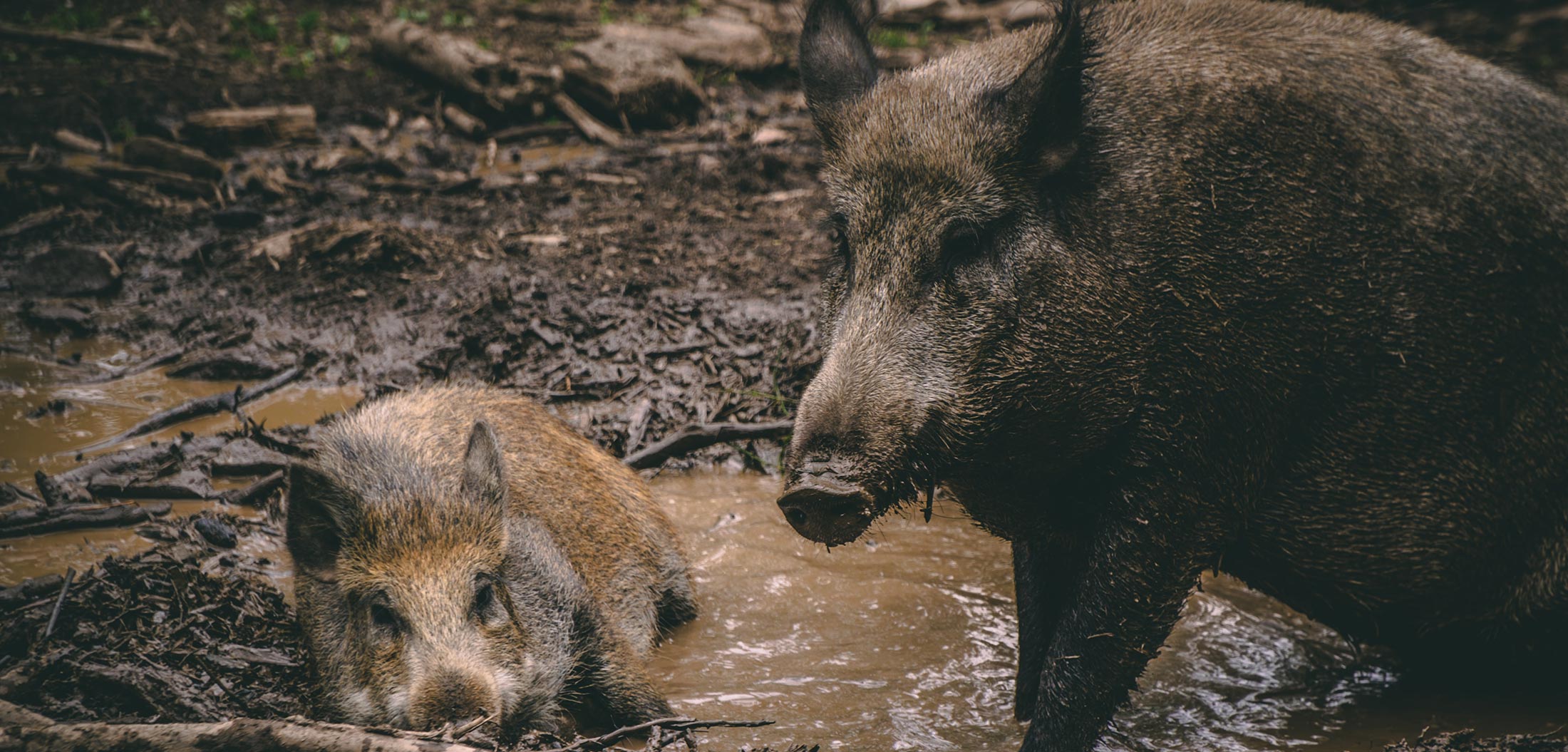
A Guide to Hunting Feral Texas Hogs
Hog hunting in Texas sits high atop many hunters’ bucket list. It’s a breed of hunting all its own that has exploded in popularity over the past decade.
In this post, we answer some of the most Frequently Asked Questions about Texas hog hunting.
Disclaimer: This is not a comprehensive guide to all applicable regulations for hunting hogs in Texas. As with any type of hunting, it’s critical that you review all applicable laws, restrictions, rules, and regulations for the area(s) you plan to hunt in to ensure you remain in full compliance with the law!
QUICK NAVIGATION
+ Who can hunt hogs in Texas?
+ Do I need a hunting license to hunt hogs in Texas?
+ Can I hunt feral hogs on private land in Texas?
+ Can I hunt feral hogs on public land in Texas?
+ How can I hunt hogs in Texas?
+ What’s the best time to hunt hogs?
+ What’s the best caliber for hog hunting?
+ Why is hog hunting so important to Texas?
Who can hunt hogs in Texas?
The short answer: just about anyone. So long as you can lawfully possess a firearm, you’re physically up for the task, and you’re in compliance with Texas hunter education requirements, you’re eligible to hunt hogs in the Lone Star State. Oh, and there’s no season—you can hunt hogs year-round in Texas.
There are, however, regulations you need to be aware of before you head out on a Texas hog hunt.
Do I need a hunting license to hunt hogs in Texas?
The answer depends on whether you plan to hunt hogs on public or private land.
Can I hunt feral hogs on private land in Texas?
Yes.
According to the Texas Parks and Wildlife Department (TPWD), Texas law, SB 317, which was passed during the 86th Texas Legislature, states that both Texas residents and nonresidents may hunt feral hogs on private land without a license—so long as the hunter first obtains landowner consent. Failure to obtain consent prior to hunting hogs on Private land in Texas is a violation.
SB 317 applies regardless of whether or not hunters pay to hunt hogs on a private landowner’s property. However, it’s important to note that, in order to collect financial reward or other consideration in exchange for allowing people to hunt feral hogs on their property, private landowners must first acquire a hunting lease license from TPWD.
It’s also important to know that a valid Texas hunting license is required if you plan on trapping or snaring hogs, as doing so can affect other wildlife species.
Can I hunt feral hogs on public land in Texas?
Yes.
Unlike private land, though, if you plan to hunt hogs on public land in Texas, you must have a valid Texas hunting license. Additionally, hunting feral hogs on public land in Texas comes with more restrictions than private land, so study up before you set out on a public land hog hunting excursion.
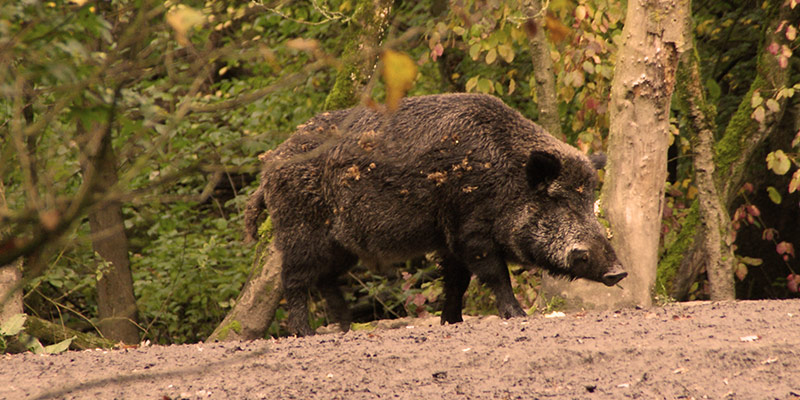
How can I hunt hogs in Texas?
The most common methods of hunting feral hogs in Texas include:
- Stalking
- Ambushing
- Baiting
- Trapping
Stalking
One of the more popular methods of Texas hog hunting is stalking.
If you’re looking to hit your step goal, stalking on foot might be right up your alley. Hogs are extremely fast and cover immense areas, making hunting them on foot a challenge—one that’s highly rewarding when it ends in success. Trail cameras can make a huge difference when stalking hogs on foot, as your chance of success is significantly higher if you know right where they are!
That said, hunting hogs by foot isn’t a great idea in the heat of a Texas summer and/or in unforgiving terrain inhabited by snakes and other predators.
Ambushing
If you’re on private land (with proper permission, of course), ambushing comes into play. That’s when the vehicles come out. For hog hunting enthusiasts, ambush hunting is where it’s at.
According to TPWD, In Texas it’s lawful to hunt animals from a motor vehicle as long as you’re within the boundaries of private property. Many Texas hog hunters ambush hogs using Utility Terrain Vehicles (UTVs), which are large, powerful off road vehicles that seat up to four passengers and feature plenty of storage space. It’s not uncommon to see die-hard hunters hunt out of SUVs and trucks, too, some of which have been outfitted with elevated seats and custom gun rests/mounts.
And if tricked out hog hunting rigs just don’t do it for you, you can even (legally) pay to hunt feral hogs by helicopter—with machine guns.
Yes, you read that right.
As the saying goes, “Everything’s bigger in Texas!”
That statement is especially true of Texas hog hunting.
Baiting
Baiting is another tried-and-true method for hunting feral hogs.
Baiting is especially popular amongst hunters who use ground blinds, elevated blinds, and tree stands—especially bowhunters. Although a highly skilled hunter can harvest a hog with a bow by stalking, your best chance of arrowing a feral hog is likely to be over a bait pile from a blind or tree stand. Baiting is also effective for stalking and ambush hunting, as it can bring hogs into your area so you can strike with the element of surprise on your side.
If you’re up for a good time, ask every hog hunter you know what their go-to bait is. There’s a good chance you’ll hear a different answer from every person you ask. Shelled corn, semi-fermented grain, rotten pumpkins, dog food, soured fruit, white bread soaked in Big Red soda or Kool-Aid, Jell-O… you name it, people have probably used it to bait hogs in Texas.
The Internet is a treasure trove of homemade hog bait recipes and commercial baits, as well.
Trapping
Trapping is another highly effective means of feral hog removal. Unlike the other methods described in this article, trapping is by far the most passive—set it and forget it, so to speak.
Trapping involves placing bait inside substantial metal traps, which are often made of heavy, welded steel. After all, feral Texas hogs can easily grow to 300 pounds or more, and they’re incredibly strong—especially when they’re threatened and extremely agitated. You’d be amazed to see how much punishment a huge, angry hog can inflict on even the beefiest of traps.
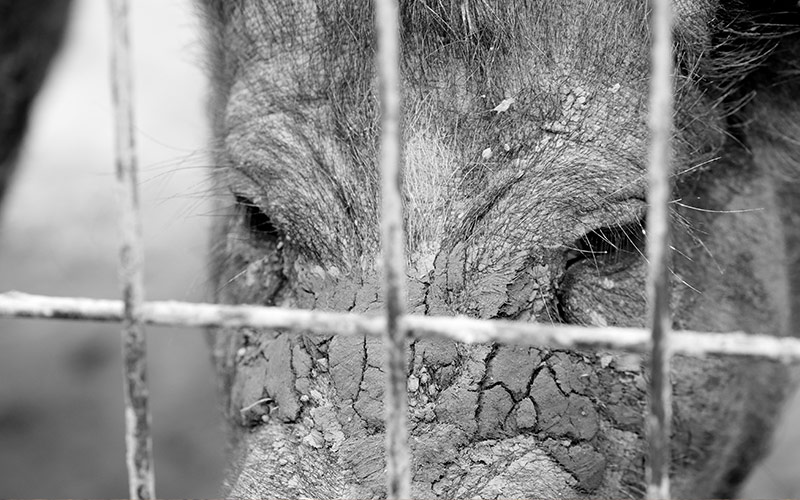
What’s the best time to hunt hogs?
Daytime vs nighttime
Feral hogs can be hunted in daylight and darkness. They key is understanding their behavior and movement patterns.
Daytime hunting
Texas summers are brutally hot, and during summer months hogs tend to hide out and conserve their energy. That behavior makes nighttime hog hunting more ideal. However, in areas with extreme hog populations, those who can withstand the heat can have great success in the sweltering sunlight.
For daytime feral hog hunters, the best times to get after it are right after sunrise and 30 minutes to an hour before sunset. When scouting for hogs, hunters look for typical hog sign: fresh feces, torn up ground, wallows—large, often muddy, indentions where pigs lay to cool off. Hogs often hang out near water sources, as well. Fun fact: feral hogs are unable to thermoregulate, which leads them to concentrate near water sources to cool off.
Sound plays a key role in scouting, as well, as hunters can pinpoint the location of a pack of feral hogs by listening for their telltale grunting and squealing. Once a hunter has located their targets, they can take their pick between stalking, ambushing, and stationary hunting tactics.
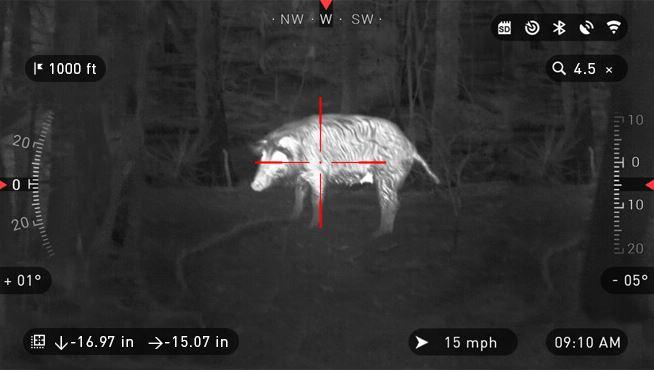
Image credit: Sportsman’s Guide
Nighttime hunting
Nighttime hog hunting is a unique and thrilling experience that has become extremely popular in Texas. It involves more gadgetry than daytime hog hunting, including thermal optics or lights. Hunters can also leverage night vision technology, but that comes with a hefty price tag so we’ll focus on thermals.
When searching for the best thermal to purchase, key considerations include budget, resolution, magnification range, and refresh rate. Battery life is another important selling point, but it’s secondary to the features and functionality listed previously. There are also clip-on thermal optics that work with your existing day sight, should you want to run a setup like that.
Naturally, budget is the first consideration. After all, you shouldn’t spend more than you can afford. Thermal optics range anywhere from a few hundred dollars to well in excess of $10,000. Knowing your ideal budget range going in will narrow your search and save you a lot of time.
As is the case with most anything, you get what you pay for; the more you spend, the better your thermal will be. The good news is that there are great entry-level options for new thermal hog hunters, so you can get started without breaking the bank and improve your gear over time.
The key component to any thermal scope is its thermal core. The core is the most critical (and expensive) part of the optic. This is where resolution comes into play. Higher resolution equates to more pixel density, which means a clearer picture.
When it comes to resolution, higher is better—and more expensive. With resolution, you want to pay attention to the resolution of the thermal sensor and not just the display. This is crucial!
For example, a thermal may boast a display resolution of 1024×768, but a sensor resolution of 320×240. That’s not to say it’s not a quality thermal. Many great thermal optics feature those resolutions, work great, and get wonderful reviews. You just need to know that your sight picture quality is determined by the sensor resolution and not the display resolution.
As you bump up in price range, you’ll start to see high-end thermal scopes that offer 640×480 sensor resolution paired with a 1024×768 display resolution. That will be a crisp picture!
Magnification range describes the thermal’s ability to zoom in on a target at longer distances. It’s important to note that zooming your thermal narrows your site picture and may reduce image resolution and refresh rate. Doing so can also impact the thermal’s ability to positively identify targets, so there are tradeoffs to magnification.
Regardless, having a thermal with good magnification—4x or 8x, for example—can increase your chances of success. As you can guess, the more you can afford to spend on a thermal scope, the better its magnification and detection range will be.
Refresh rate is a measure of how frequently a thermal refreshes the scene, which impacts how clearly you can detect movements in the sight picture. The standard frame rate range is between 7.5 Hz and 60 Hz. The faster / higher the refresh rate, the better. High refresh rates also correlate with higher cost.
Trusted thermal scope brands
If you’re in the market for a thermal scope—through our personal experiences and recommendations of trusted friends and industry experts—we feel confident pointing you to the following brands:
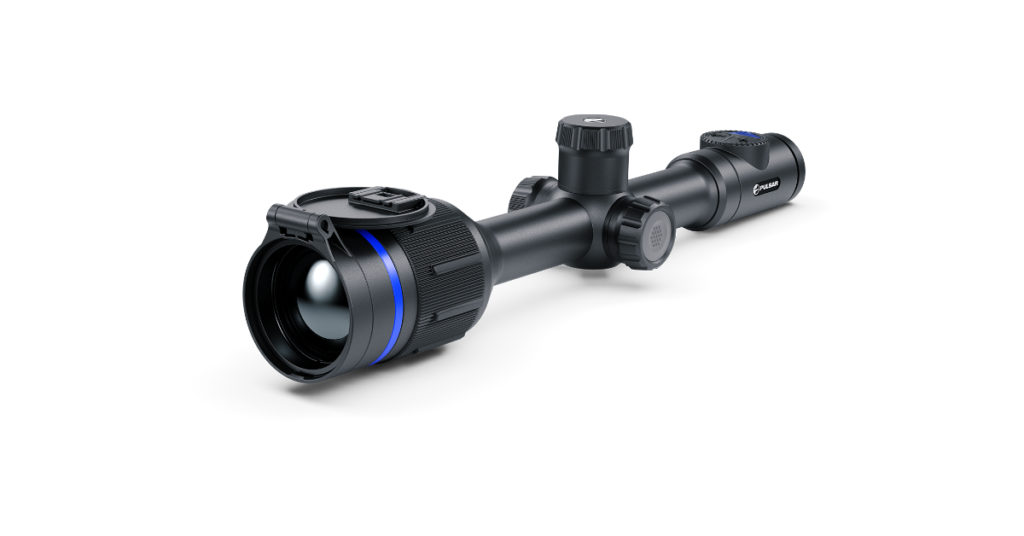
The new Thermion 2 Pro thermal scope by Pulsar
What’s the best caliber for hog hunting?
Any time you get into a “best caliber for [insert species] hunting” conversation, strap in for a debate. Chambering opinions are typically strong.
We’ve seen and heard about feral hogs dropping with a well-placed shot from a .22 LR, as well as hogs living to see another day after taking a heavy punch from a 308—or at least making it far enough to be unrecoverable before expiring. Feral hogs are simply built different.
In general, though, these chamberings that are highly reliable for taking down feral hogs:
.223 / 5.56 / .223 Wylde
.223 and 5.56 rounds are capable and effective for hog hunting. They don’t have the same knockdown power as .308 or other .30-caliber rounds, but they’ll almost always get the job done.
Christensen offers several Modern Sporting Rifles chambered in .223 Wylde, which is a hybrid chamber that accepts both .223 and .556 rounds. .223 Wylde does a great job regulating pressure for both rounds. We also offer rifles chambered in .223 Remington.
.30-Caliber, 6.5 Creedmoor, 6.5 PRC
.30-caliber, 6.5 Creedmoor, and 6.5 PRC rounds are capable of taking down just about any big game you’ll find in North America, and they’re highly effective for feral hog hunting. Popular .30-Caliber chamberings include .308 Winchester, .30-06 Springfield, .300 Winchester Magnum, and .300 PRC.
Christensen offers Modern Sporting Rifles and Bolt-Action Rifles chambered in many of the .30-caliber calibers preferred to today’s hunters:
Bolt-action versus semi-automatic
Whether you prefer to hunt hogs with a bolt-action or a semi-automatic rifle is up to you. It’s a matter of personal preference.
For greater precision at long range, a bolt-action rifle with a longer barrel is ideal. In addition to long-range accuracy, as you can see above, Christensen’s bolt-action rifles come in a wide variety of .30-caliber and 6.5 chamberings that pack an immense punch with heavy knockdown power.
However, if you find yourself in a position to engage a large group of hogs—which is common in Texas, not to mention a lot of fun—a bolt-action rifle’s magazine capacity could hold you back.
For that reason, the firearm of choice for many Texas hog hunters is a semi-automatic Modern Sporting Rifle. Our MSRs come chambered in .223 Wylde, .308 Winchester, and 6.5 Creedmoor, giving hog hunters options on which round they want to use. Plus, our MSRs accept a variety of magazines, which can dramatically increase the number of rounds at the hunter’s disposal—although, at the cost of increased weight. But when you get on a big group of hogs, though, the more rounds, the better.
Why is hog hunting so important to Texas?
Recent studies published in 2016 and 2019 estimate that the annual loss to agriculture in Texas due to feral hog damage is approximately $118.8 million.

Image credit: Texas Farm Bureau
Outside of Texas, according to CNBC, feral hogs are estimated to cause up to $2.5 billion in damage, annually, across the 39 states in which they’re known to reside.
In addition to crops, feral hogs can negatively impact livestock production efforts. Feral hogs love to root, and in doing so they can facilitate weed growth in livestock grazing pastures that impacts livestock’s grazing opportunities and can result in both production losses and steep repair costs.
Hogs often eat feed intended for livestock, causing further issues. They can even introduce diseases that negatively impact livestock health. If that’s not enough, hogs have been known to kill young goats, sheep, and even young calves.
The Texas Parks and Wildlife Department says that from 1982 to 2016, the feral hog population in the United States boomed from 2.4 million to 6.9 million—with an estimated 2.6 million wild hogs residing in Texas alone. Hogs are migrating north, too.
Why is the hog population rising so rapidly in Texas and other U.S. states? Reproduction.
TPWD also says that male hogs have been documented reaching sexual maturity at just five months of age, and have been observed trying to breed at just six months of age—although they’re typically not successful breeding until 12-18 months of age.
Female hog reproductive maturity has been reported in as few as three months of age, although successful breeding typically doesn’t begin until they reach 6-10 months of age.
In addition to their ability to reach reproductive maturity very early in their lives, female hogs can breed multiple times per year, and they average an average litter size of 4-6 young per litter. These factors are major contributors to feral hogs’ explosive, sustained population growth.
If we had to sum up the importance of hog hunting in Texas—and other states where they’re prevalent, for that matter—two words would suffice: damage control. Feral hogs are some of the most damaging creatures in the U.S., wreaking havoc on the environment and causing immense physical and financial damage. They’ll likely never be eradicated, making population control critical.
Especially in Texas.
 since 1995
since 1995













